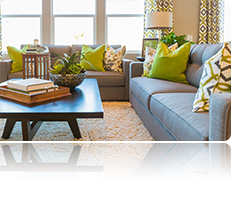I’m working with some
very excited clients who are buying a new construction home. The builder is very well respected in the
area and is known to build a good, solid home.
Last week, we were informed that it is okay to do a home inspection to
ensure all systems are working well and there are no obvious issues prior to
the new owners moving in.
In a conversation with my clients, they questioned the need
to have a home inspection. They
indicated they have visited the home regularly during the build process and feel
like all was going well (from what they could tell), so aren’t sure if it is
necessary to spend the money for the inspection. I shared that mistakes can happen or things
get overlooked, even with a really good builder, and it is probably cheap
insurance to find out about any issues now versus waiting. They agreed and the home inspection was
conducted yesterday morning.
Most of the ‘repair needs’ found during the inspection are pretty easy fixes. For example:
- Missing vapor barrier in spots in the crawl space
- Construction debris left in the crawl space, on the roof and in the gutters
- Loose wires under the fireplace that need to be contained in a junction box
- Garbage disposal not working properly
- Caulking at counter top/wall junctions.
In previous new construction home inspections, issues such as
missing attic insulation, improperly installed low-point drain, sewer lines not
hooked up, leaking pipes (plus others!) have been found and saved the buyers a
lot of future angst!
So, yep, it is worth the expense of the home inspection on a
newly constructed home.





 The way you place furniture in a room can make all the difference in the world. Placement can either make a space feel open and inviting or cramped and off balance. Easily fix furniture faux pas with these arranging tips, and create a space that's design-show worthy.
The way you place furniture in a room can make all the difference in the world. Placement can either make a space feel open and inviting or cramped and off balance. Easily fix furniture faux pas with these arranging tips, and create a space that's design-show worthy.